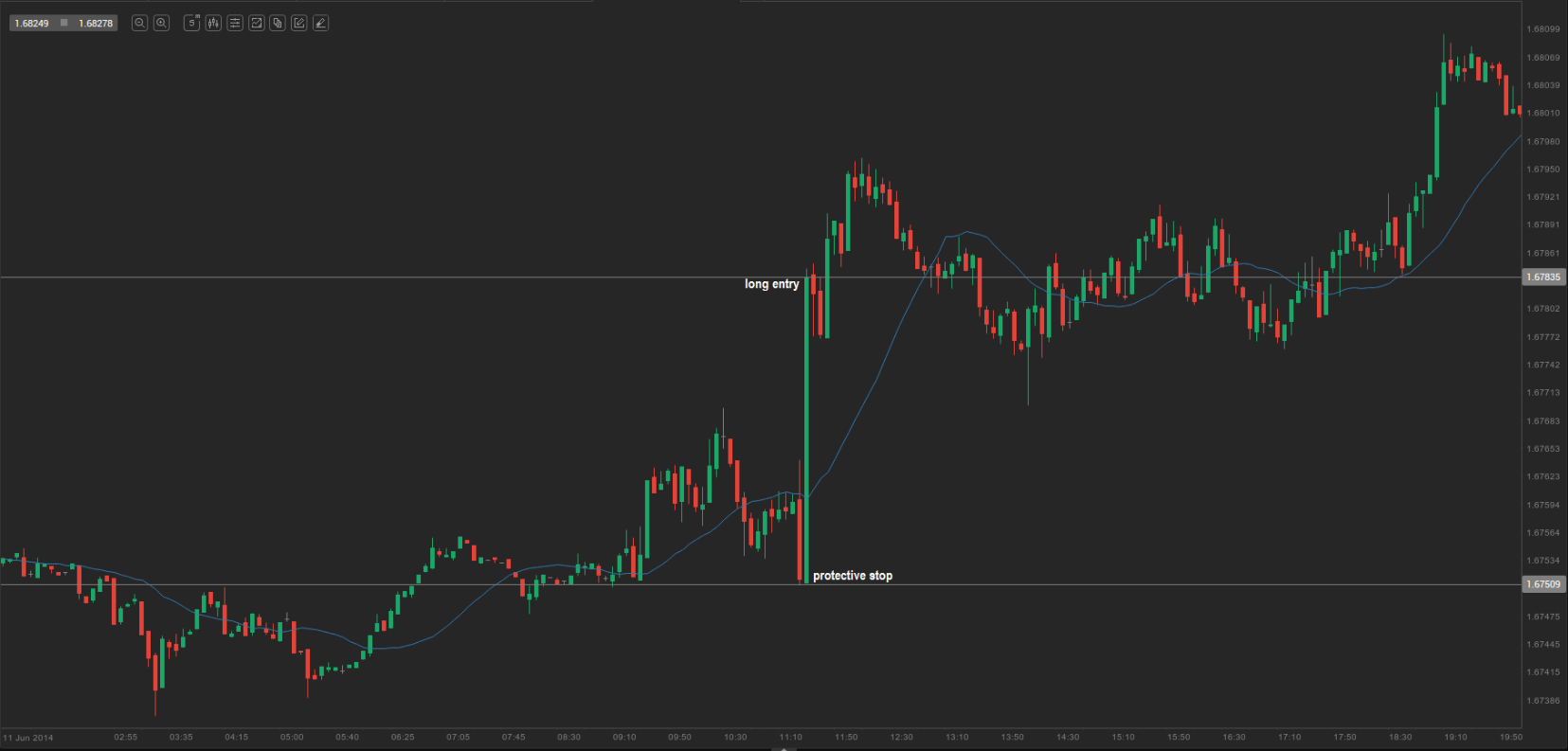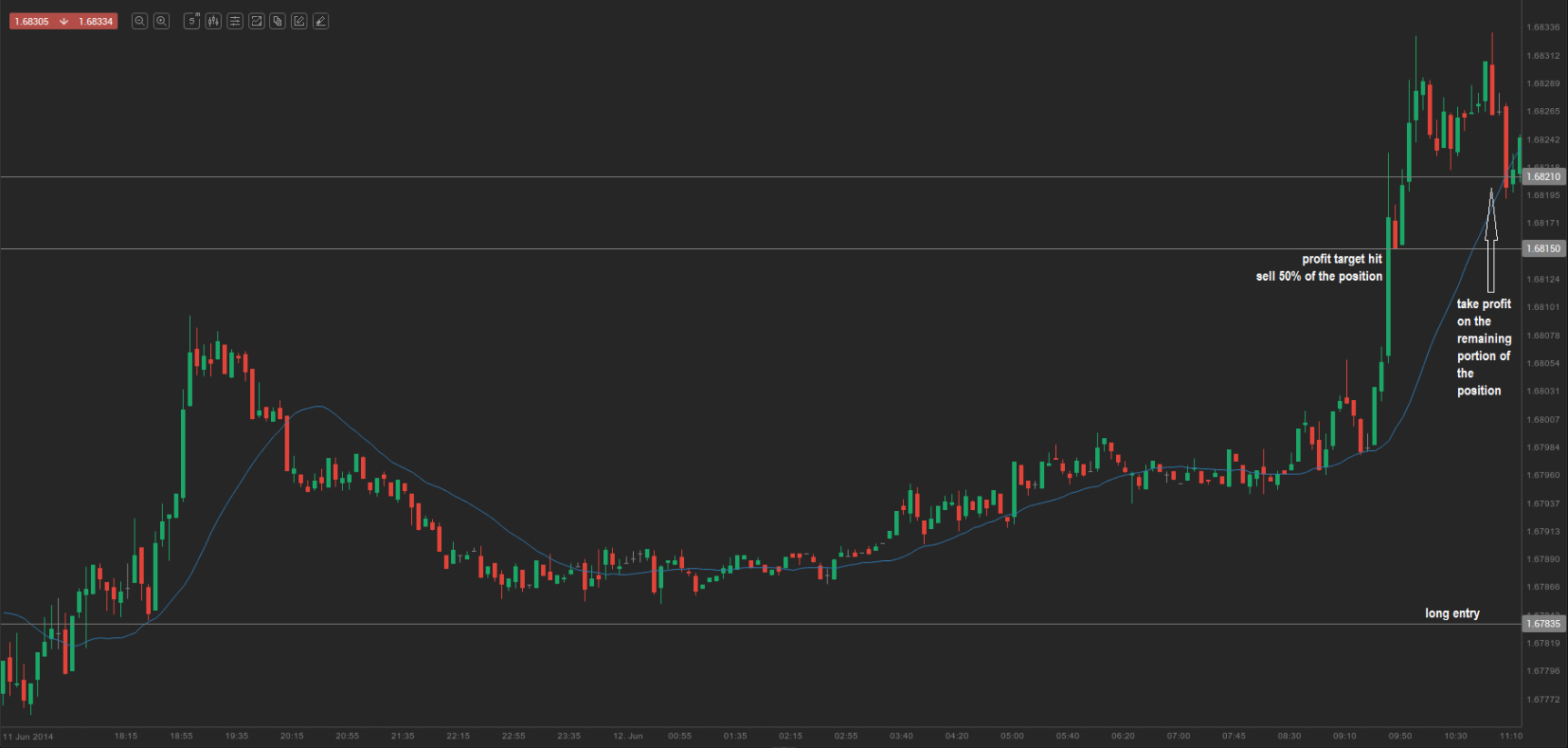Trading the news – reactive approach
This lesson will cover the following
- A quick overview
- Steps a trader needs to follow for this strategy
When using this approach, a trader does not need to forecast whether a particular economic report will show improvement. The only action he/she needs to take is to react after the economic data are released, and only if the reported figure is substantially above or below what analysts have expected. Signal providers that trade the news usually employ this reactive approach.
Some traders prefer to enter the market only if the reported number/reading is more than 100% above the median forecast. For example, if the Japanese industrial production index is reported to have risen 4.4% month on month (while experts projected an increase of 2.0% for the period), a reactive trader would probably sell USD/JPY. Conversely, he/she would probably buy USD/JPY if the index of industrial output were substantially below the median forecast, especially if the rate of change were negative. The more the number/reading deviates from the median estimate, the greater the chance of a successful trade.
- Trade Forex
- Trade Crypto
- Trade Stocks
- Regulation: NFA
- Leverage: Day Margin
- Min Deposit: $100
What does a trader need to do?
As with any other trading approach, there are certain steps to be followed.
When going long:
The trader should enter the market at least five minutes after a key macroeconomic report is published to ensure there are no immediate corrections. If the figure greatly exceeds forecasts, the price move may last for more than five minutes;
The trader should place a protective stop at the low price of the news candle. If the pair retraces to the candle’s low formed when the key economic report was released, this can be taken as a signal that market participants are not confident in the figure;
The trader should take profit on 50% of his/her position when the price moves in his/her favour by the amount risked;
The trader should trail the stop on the remaining portion of the position with the 20-day SMA, or set a profit target at a distance three times the amount risked.
When going short:
The trader should enter the market at least five minutes after a key macroeconomic report is published;
The trader should place a protective stop at the high price of the news candle;
The trader should take profit on 50% of his/her position when the price moves in his/her favour by the amount risked;
The trader should trail the stop on the remaining portion of the position with the 20-day SMA, or set a profit target at a distance three times the amount risked.
The reactive approach also has some issues – the stop tends to be larger, which may be inconvenient for some traders. In addition, the first profit target may not be reached for hours. For comparison, when a trader uses the proactive approach, as long as the reported number/reading is decent, the first profit target is usually reached within the five minutes following the news release. The second portion of the position may remain active for several hours; however, the protective stop is placed at breakeven.
Example
Let us look again at the UK jobless claims report, released at 11:30 GMT+3 on 11 June 2014. We again use the 5-minute chart of GBP/USD. As reactive traders, we enter long five minutes after the report is published. We therefore open the position at the close of the news candle, 1.6783, and place our protective stop at the candle’s low, 1.6751. The amount we risk is 32 pips, so we now set our first profit target 32 pips above our entry, at 1.6815. The target is hit at 09:50 GMT+3 on the next trading day (as noted above, the first target may sometimes take hours to reach). We sell 50% of the position at 1.6815 and move the protective stop on the remaining portion to breakeven. Next, we trail the stop with the 20-day SMA. The remaining portion is closed when the price moves back below the SMA. This occurs at 11:15 GMT+3, at 1.6821. The total profit on the trade is 32 pips (1.6815-1.6783) + 38 pips (1.6821-1.6783), or 70 pips, giving an average profit of 35 pips.


